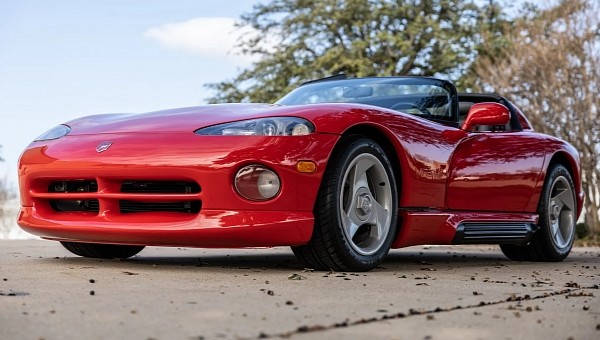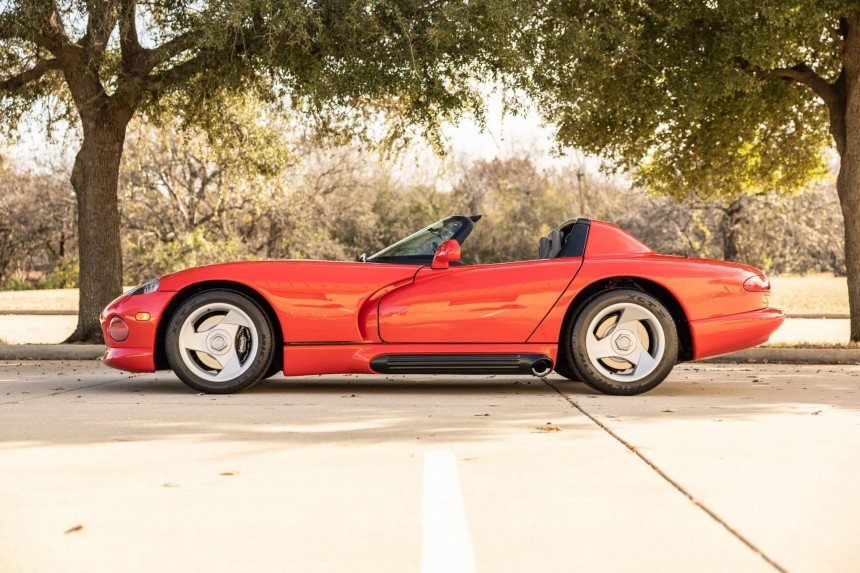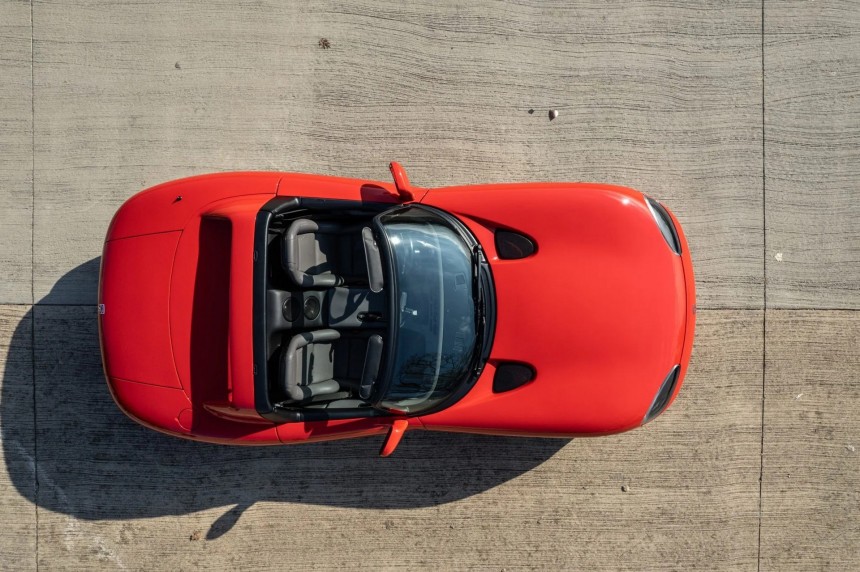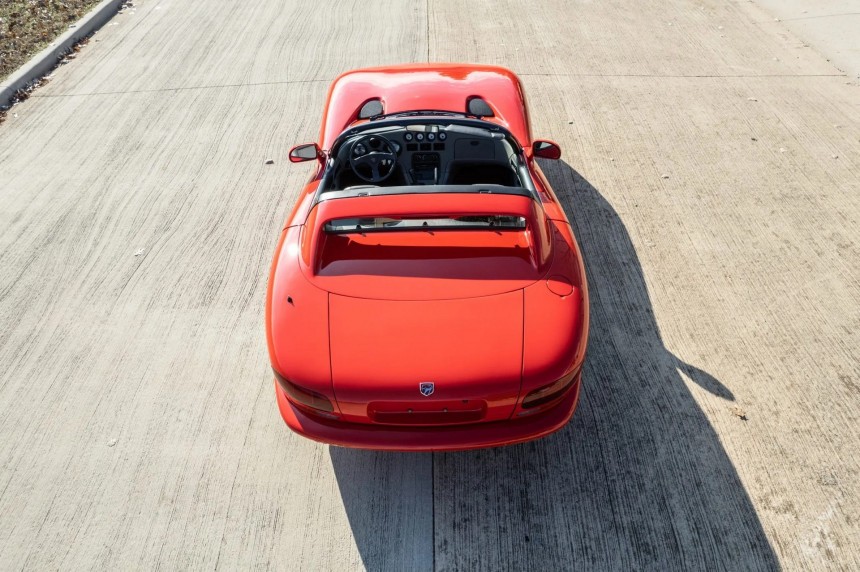1991 was filled with momentous events in America. The Indy 500 celebrated its 75th anniversary; the Giants beat the Bills in a historic final Tampa Stadium Super Bowl; operation Desert Storm began that January. The Bulls won their first NBA title; a soaring bull market pushed the Dow above a then-record 3,000 points for the first time in the history of Wall Street; and Dodge rolled out a bull-engined monster.
This last bit of info is the central focus of our story, as the Mopar muscle would flex in the form of a monument of the crank-spinning, piston-shrined universe: the Viper. Although the car made its official sales debut in 1992, the 1991 Indy 500 event pushed Dodge into coming up with an All-American solution for the pace car.
The "solution" was needed because there was a problem with Dodge's initial proposal for the event's official car. A big problem, as it turned out, with United Automobile Workers fervently criticizing the choice. The reason was bluntly patriotic: the Dodge Stealth – originally chosen to start "America's race" was made in Japan as a Siamese twin to the Mitsubishi 3000GT.
True red-white-and-blue-blooded gearheads took offense at Mopar's decision. Purely coincidentally, that year would mark six decades since the Pearl Harbor attack, in which waves of Mitsubishi aircraft rained hell on America's fleet in the Pacific.
So, the selection wasn't the greatest in political terms. Still, most importantly, only American-built cars paced the 500-mile run in the past. The tradition would not be ended in 1991 and was never broken to this day.
Dodge had a new car in the works since 1988, something that would shake the world, but it wasn't ready to hit the tarmac of the Indianapolis Motor Speedway in May of '91. However, under the pressure of public opprobrium, Dodge tightened the screws on its new project and rolled out a Dodge Viper RT/10 prototype.
Carroll Shelby drove it for the opening of the race, and America couldn't be prouder: the legendary 90-year-old motorhead – having undergone a heart transplant a few months before – fit the bill perfectly. It became a good omen for the Viper, which eventually became a legend in its own right.
The car came with the 488 cubic-inch (eight liters) engine, but it veered away from the muscle car creed of V8-ness. Instead, it put its hopes in 10 cylinders arranged in the V architecture. Chrysler didn't set on reinventing the wheel but had the engine built by some hot-headed bullies from across the pond: Lamborghini (owned by Chrysler at the time).
The Italians provided an odd-firing powerplant that traced its roots to the Magnum 5.9 small block. The engine put out 400 hp (406 PS) and 465 lb-ft (630 Nm) of tire-shredding brute force. Dodge didn't offer luxury options to keep the car on the lighter side, so it lacked door handles, keylocks, windows, or a proper roof.
It didn't provide comfort or safety options, either: no air-conditioning, no traction control, no anti-lock brakes, and no power steering. The first-generation Viper was an ogre destined to smash 0-60 times and rule drag strips.
And it didn't disappoint, as the 1.5 tones Dodge would hit the 60 mph (97 kph) mark from a standstill in 4.2 seconds and close the quarter-mile affair in 12.6 seconds. Flat out, it would hit 165 mph (266 kph) – if one dared to push its six-speed manual limits.
In all fairness, a clearing statement is needed: the car had vinyl windows – the driver would have to unzip them to access the car's inside-mounted door lock. Also, a piece of canvas served as protection from the elements. Later in production, optional fiberglass roofs, AC, power-assisted steering, and brakes would be offered.
Only 285 Vipers – all red – were built from 1992 to 1996, and the original-generation examples are the most collectible of the model. One of the very early models – chassis number 28 out of the initial 285 – is auctioned again after it last changed hands in September 2021 (at that time, the winning bid was $135,000).
The exciting detail about this vehicle is the mileage – 93 since it crawled off the assembly line in late 1991. Mathematically speaking, the car covered around a third of a mile per year, on average – barely enough to get its V10 monster to temperature.
It can become a debate whether a first-gen Viper is as enjoyable to drive as it is to sublimate rubber and blast the dragstrip with its uneven-firing sequence rumbles and grunts. A cassette player is the only creature comfort available.
It has been part of collections its entire life – and the condition proves the preferential treatment it received. A hard top is provided – a later purchase by one of the previous owners. Opinions differ radically among the people who watch the online auction – some say the car deserves a better (read "fast-‘n’-loud") road life. In contrast, others manifest in favor of keeping the garage queen title.
The "solution" was needed because there was a problem with Dodge's initial proposal for the event's official car. A big problem, as it turned out, with United Automobile Workers fervently criticizing the choice. The reason was bluntly patriotic: the Dodge Stealth – originally chosen to start "America's race" was made in Japan as a Siamese twin to the Mitsubishi 3000GT.
True red-white-and-blue-blooded gearheads took offense at Mopar's decision. Purely coincidentally, that year would mark six decades since the Pearl Harbor attack, in which waves of Mitsubishi aircraft rained hell on America's fleet in the Pacific.
Dodge had a new car in the works since 1988, something that would shake the world, but it wasn't ready to hit the tarmac of the Indianapolis Motor Speedway in May of '91. However, under the pressure of public opprobrium, Dodge tightened the screws on its new project and rolled out a Dodge Viper RT/10 prototype.
Carroll Shelby drove it for the opening of the race, and America couldn't be prouder: the legendary 90-year-old motorhead – having undergone a heart transplant a few months before – fit the bill perfectly. It became a good omen for the Viper, which eventually became a legend in its own right.
The Italians provided an odd-firing powerplant that traced its roots to the Magnum 5.9 small block. The engine put out 400 hp (406 PS) and 465 lb-ft (630 Nm) of tire-shredding brute force. Dodge didn't offer luxury options to keep the car on the lighter side, so it lacked door handles, keylocks, windows, or a proper roof.
It didn't provide comfort or safety options, either: no air-conditioning, no traction control, no anti-lock brakes, and no power steering. The first-generation Viper was an ogre destined to smash 0-60 times and rule drag strips.
In all fairness, a clearing statement is needed: the car had vinyl windows – the driver would have to unzip them to access the car's inside-mounted door lock. Also, a piece of canvas served as protection from the elements. Later in production, optional fiberglass roofs, AC, power-assisted steering, and brakes would be offered.
Only 285 Vipers – all red – were built from 1992 to 1996, and the original-generation examples are the most collectible of the model. One of the very early models – chassis number 28 out of the initial 285 – is auctioned again after it last changed hands in September 2021 (at that time, the winning bid was $135,000).
It can become a debate whether a first-gen Viper is as enjoyable to drive as it is to sublimate rubber and blast the dragstrip with its uneven-firing sequence rumbles and grunts. A cassette player is the only creature comfort available.
It has been part of collections its entire life – and the condition proves the preferential treatment it received. A hard top is provided – a later purchase by one of the previous owners. Opinions differ radically among the people who watch the online auction – some say the car deserves a better (read "fast-‘n’-loud") road life. In contrast, others manifest in favor of keeping the garage queen title.





























































